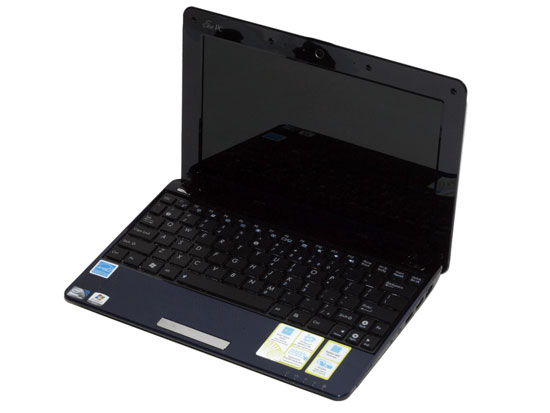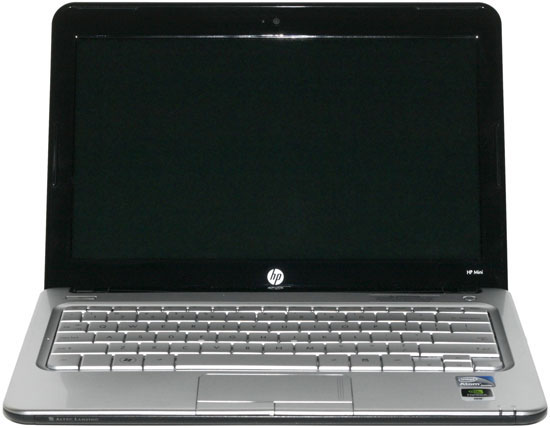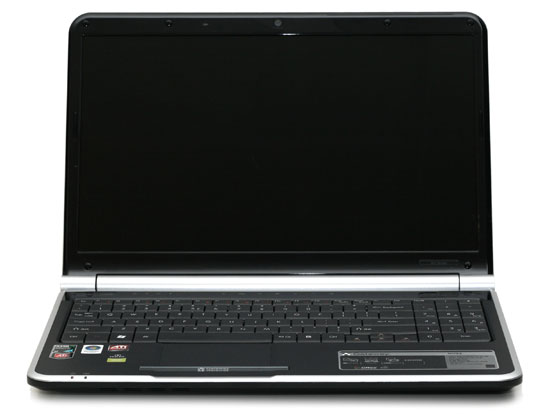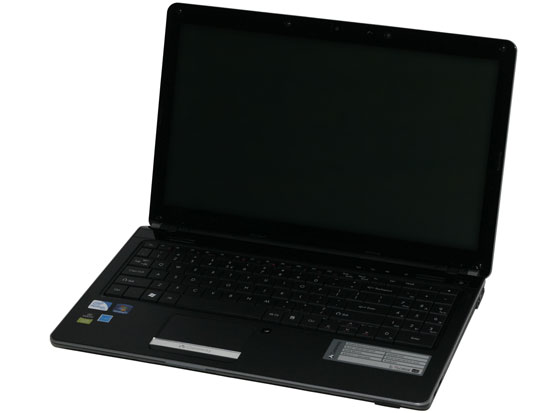Intel Core 2 CULV Roundup: Who Needs Atom?
by Jarred Walton on February 4, 2010 4:00 AM ESTMarket Recap (aka Conclusion Part 1)
We asked at the outset, "Who needs Atom?" It's now time to answer that based on our review today. What we really need to look at are the strengths and weaknesses of the various platforms at the various price categories. We've been over this ground before, but it bears repeating. We'll focus specifically on the entry level laptops and netbooks, with a price ceiling of around $800. Given those parameters, here's how things work out.

Sub-$350 is clearly the domain of the Atom-based netbooks, so it's definitely not dead. You'll sacrifice a lot in terms of performance, and features are also going to get cut. HD video decoding support generally isn't present, but we may see some netbooks start to ship with Broadcom Crystal HD to handle that. Intel also has their GMA 500 IGP that handles H.264 decoding quite well, but there were a lot of other issues with the drivers that made it a less than perfect solution. At present, look for Atom N450 netbooks for around $300 (give or take), and you can expect great battery life and very small form factors. So yes, Atom does have its uses.
$350-$500 is where things start to get messy. Atom netbooks obviously fall into this price range as well, but Microsoft won't let manufacturers ship Windows XP with more than 1GB RAM or a 160GB HDD. That's fine, but now you can get Windows 7 Starter (or even Home Premium in some cases) netbooks with 2GB RAM and larger HDDs. Battery life for such netbooks remains stellar, but the video decoding support is still lacking, barring a separate video decoder chip.

Another option that we encounter in this price range is NVIDIA's ION platform. ION works with the older Atom N270/N280, and battery life isn't as good as the Intel solution. The benefit is that you get full HD video decoding support - including the ability to play Blu-ray movies, assuming you have an external Blu-ray drive. Gaming is theoretically possible, but many games require more CPU power than Atom can deliver. Depending on the netbook features, ION looks to cut battery life by around 25% relative to non-ION N280 netbooks. So you can get better video support and around four hours of HD video playback and six hours of Internet surfing, or you can stick with vanilla Atom and get six hours of 720p (or lower) video playback, no Flash HD support, and up to ten hours of Internet surfing.
Need some more options? There are plenty of choices! CULV makes an entrance at just over $400, with battery life that's a bit better than ION netbooks. You also get 2GB RAM compared to most netbooks that ship with 1GB, and the GS45 chipset is much better than 945GSE so HD video content isn't a problem for the most part. (We're still waiting on full Flash 10.1 video support from Intel's IGPs, though.) Video playback can run for about 4.5 to 5 hours, and Internet battery life can reach seven hours.

If you prefer more performance and don't care as much about battery life, AMD laptops also make an appearance in this price bracket. You can find HP/Compaq and Acer/Gateway laptops with Athlon II M300/M320, 3GB/4GB RAM, and HD 4200 graphics for just under $500. These will typically be 15.6" notebooks rather than smaller form factors, and the size combined with the component choices will deliver battery life of around 2 hours for video, 2.5 hours Internet, or up to 3.5 hours in lighter loads. If you want to drop back to the older Athlon X2 CPUs and HD 3200 graphics, you can even get such laptops for around $400 (i.e. the Gateway NV52 line). We'd recommend against any of the single-core CPU solutions (AMD or Intel), as the lowered performance isn't backed by significantly improved battery life - CULV will do better in our opinion. Still, if you're okay with the compromise, you can find AMD Neo laptops as small as 11.6" with the MV-40 CPU. (Look at the MSI X610 results to see what sort of performance you'll get.)
Need even more choices? Well, they're there. Standard Intel-based (i.e. non-CULV) laptops are also available for just under $500 now, with CPUs like the Pentium T4300. The Gateway NV58 is representative of this class of laptop. Battery life is going to be around 2.5 hours for video, three hours for Internet, and up to 4.5 hours in light workloads. Basically, you'll get about 25% more battery life and 25% more CPU performance than the competing AMD solutions, but gaming isn't at all practical. (It's at least borderline on many games with the HD 3200/4200, with plenty of slightly older titles that run fine.)

At $500-$650 CULV really starts to show up a lot. Now instead of 2GB RAM, you get 4GB and generally larger hard drives. The Pentium SU4100 solutions are typically the best bang for the buck, with Core 2 Duo SU7300 usually adding $75 and only a small (5% or less) performance increase. SU7300 does add VT-x support, though, if you feel that's important. For battery life without compromising too much on performance, we feel CULV is an excellent choice. Laptops like the models we reviewed today would work great for college students, allowing you the freedom to work on papers and take notes all day at campus without the need to use an AC adapter. You can do the same with Atom, but these are faster and generally more capable. You still have to give up gaming performance, though - you'll need a discrete GPU with CULV if that's what you're after.
If you don't care about battery life and you want gaming performance, you can also turn to regular AMD and Intel laptops with GPUs like the Mobility Radeon HD 4330 or GeForce G210M (or 8200M/9300M). Another option is the new Core i3 laptops, with prices starting at around $600 for the i3-330M complete with 4GB DDR3, 320GB HDD, and the improved Intel HD Graphics. And from here the options begin to open up rapidly. As we've discussed already, the only thing you really need for CULV to handle games is a more capable GPU, and the ASUS UL line provides that as well as switchable graphics, giving you the best of both worlds. The smaller models cost a bit more, but the UL50Vt is currently selling for as little as $700. Don't like NVIDIA's GeForce line but still want CULV? Try the Lenovo U450P 33892GU for $800 (but we'd stick with the ASUS UL50Vt or UL80Vt).










62 Comments
View All Comments
JarredWalton - Thursday, February 4, 2010 - link
The problem comes in getting anyone - and I do mean anyone - to send us AMD laptops for review. The manufacturers seem to view them as bastard step children that should be kept out of view as much as possible. The Gateway NV52 shows what sort of performance you can expect, give or take, as it has a 2.1GHz QL-64 CPU, but battery life on the newer 45nm parts should be better and performance can be a bit higher as well.Even going to AMD doesn't really help, since they don't want to step on any toes by sending out review units. They would love to do that, but if they did they could easily end up with HP (as an example) saying, "We don't like you sending out our product... so we're going to discontinue that SKU."
Of course, the new Intel HD Graphics actually beat the HD 3200/4200 in quite a few tests as far as I understand things. (I'm still trying to get i3/i5 laptops for review as well.) Even then, HD 3200 at least really struggles in quite a few games to get playable performance - the GeForce 9400M for example looks to be about 60% faster.
MonkeyPaw - Thursday, February 4, 2010 - link
Actually, I made a mock-CULV out of my $400 Toshiba notebook, equipped with AMD 3100 graphics and an Athlon X2 QL-65. I use a program called K10stat, which allows you to alter the P-states of K8+ AMD CPUs. By default, the QL-65 is a 35W CPU with a max-clock of 2.1ghz, but after I changed the 2 power states to .9v @ 900mhz and 1.0v @ 1.3ghz, I end up with a CPU that consumes 9-17W, depending on the P-state (it stays mostly in the 9W area). That tweak added about 30 minutes to my battery life (6-cell), matching my company-issued 3-cell HP netbook. Even with the reduced clocks, performance is still massively better on the Toshiba. My wife hasn't noticed or complained about performance yet, though we don't demand much beyond internet, iTunes (sigh), and office/budget stuff.OMG Snarf - Thursday, February 4, 2010 - link
That's a darned shame - the manufacturers don't even respond to requests for hardware? I wonder if that's the manufacturers or some super secret Intel clause (conspiracies ahoy!). I guess I'd have to look through the NV52 reviews again, but its nice to know that a 1.5GHz part should equate roughly to a 2.1GHz part.My issue with the new Intel HD is that right now the Core iX UM systems aren't out that I've seen, and as was detailed in another article, there's still the issue of the L2 cache not being power gated and the later inclusion of SRAM to fix this to provide more power savings, so who's to say where those fit in the ultraportable world at this time? I think that will take time to flesh out, and by that point, there will be another 'Tock' and maybe another minor 'Tick' to fill it out. That's already the end of the year, given Intel's performance for last year. And by that point, there might be another AMD mobile chipset, so it all could be moot.
Finally in reference to the 9400M, the issue is cost. The 3200 can push a few more polys than the 4500 can, so if you want the option is there. The 9400 can, too, if you want to spend double the cost, but the point I got out of this review was low-voltage that was around the Atom/Netbook price point that offered overwhelming performance advantage while still retaining the other features (battery life/portability).
But I digress. Thanks for the response, and while I'm sad to hear that AMD gets treated that way by the manufacturers, its good to know that its not because of any bias on the editorial staff that others like to claim.
So long as the illegal overclocking stops for the i3/i5/i7 and X3150 benchmarks ;) I kid, I kid. Heh. Those were the days.
Drag0nFire - Thursday, February 4, 2010 - link
Well, I'd love to see a review of the AMD-based Lenovo x100e if you can get your hands on it. It may provide competitive performance at the $400-500 price point.Cuhulainn - Thursday, February 4, 2010 - link
When I saw the article I figured one of those reviewed must have been from the Asus UL line. They get mentioned several times, and seem to be the only options with decent gaming ability + battery life. If nothing else one of them should have made the review list for battery life alone. Isn't that a big part of the reason for using a CULV processor?cblais19 - Thursday, February 4, 2010 - link
If you look at other reviews on this site, they've done an overview of the UL80vt mentioned in this article, as well as an in depth review.mschira - Thursday, February 4, 2010 - link
I especially like the Asus approach overclocking the sauce!I want a 10" overclocked CULV!
Forget iPAD and Atom.
M.
feelingshorter - Thursday, February 4, 2010 - link
Do you mean the 1810TZ in the conclusion? Which is the SU7300 11 inch laptop. The 4810TZ is a 14 inch laptop. Also did you mean 1410 instead of the 3810?JarredWalton - Thursday, February 4, 2010 - link
No... I've looked at the 3810TZ, 4810TZ, and 5810TZ at stores, played around with them a bit, etc. They're all better, in my opinion, than the 1410/1810. It's not just a case of being larger, either; the keyboards just don't feel quite so mushy as the 1810 chassis.The 1410/1810 are good, but more of a "B+" as opposed to "A-". I have no hesitation recommending any of the Acer TZ models that have SU4100, though, which is why I awarded the group (along with the Gateway EC54) a bronze.
Honestly, though, there's plenty of personal preference in what makes a good keyboard. Some people like the soft touch ("mushy" in my view) keyboards, and others like more of a "clicky" keyboard. If you can try any of the Timeline series out - or really any CULV, including the Lenovo U series and a few others I haven't mentioned - and you're happy, the performance is going to be very similar to what I've shown here.
Hope that clears things up. :-)
Roland00 - Thursday, February 4, 2010 - link
Did the 1410 have the battery in them? Due to the design of the chassis (to hide the battery and not have it stick out), the battery provides a lot of support. With the battery inside there is a lot less give on the 1410.I know for I bought one for 350 with the su2300, 2gb memory, and 160gb hard drive.